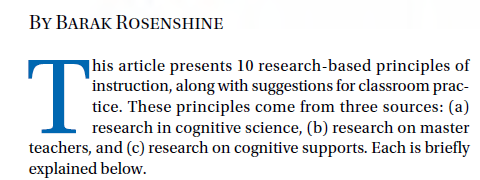In the last post we explored the link between the hours we work and our effectiveness in the workplace. I suggested that while we associate success with long hours, most of us could work fewer hours and still be as effective. It’s our personal attributes – our knowledge, the way we communicate, our ability to form productive relationships – which make us effective, not the length of our days.

This post will address some particular challenges that teaching presents when it comes to workload, and then some solutions.
Let’s start with email. Teaching must be right up there when it comes to jobs ill-suited to email. Cal Newport, author of ‘A world without email’, suggests that email works well when connecting a small team working on a single project. But it doesn’t scale up well. And it’s particularly damaging in a large organisation, where anyone could email anyone at any point with the expectation of a response. I wonder how many office workers up and down the land open up Outlook in the morning and spend the rest of their day reacting to their inbox, rather than structuring their day based on what they need to get done.
Teachers don’t have that luxury of course, because they spend a fair bit of time teaching. It’s only when you leave the classroom that you realise the intensity of the work teachers do every day. Delivering a presentation, or chairing a meeting, might be the toughest thing that a typical office worker does in a day, yet teachers and school leaders have to be on it throughout the day. For a teacher on a full teaching load of around 20 hours, or anything close to it, simple maths will tell us that with say 30 minutes prep per lesson and 30 minutes follow up, we’ve already hit a full working week.
Returning to Cal Newport and his critique of email, he argues in this podcast that if a university wanted to recruit a superstar lecturer, all they’d have to do is promise them that they wouldn’t need an email address. The opportunity to focus on their subject, free from email’s persistent ping, would be enough to attract the best in the business.
Do teachers really need a school email address?
In his wonderful book ‘4000 Weeks: Time and How to Use It’, Oliver Burkeman says: “Getting better at processing your email is like getting faster and faster at climbing up an infinitely tall ladder: you’ll feel more rushed, but no matter how quickly you go, you’ll never reach the top.”
Burkeman and Newport agree that email itself is flawed, so no nifty hack is going to free you from its grip. For Newport, workplaces should be “citadels of concentration”, yet too often workplace communication is a free for all, as different people and different departments fight for time and attention via email. As a result, we work with what Burkeman describes as “crushing intensity”.
Does it have to be like this?
Thankfully, as well as raising concerns, both Cal Newport and Oliver Burkeman offer plenty of solutions.
Burkeman shares the story attributed to Warren Buffett that if you’re serious about productivity you should write down the 25 things you want to achieve in life and then cross out all but the top 5, because it’s the other 20 that will distract you from the most important stuff. You can’t do it all!
I think we could learn from this in education. “If you have more than three priorities, you don’t have any” says Jim Collins, yet how many school or department improvement plans limit themselves to just three or fewer priorities? Too often these plans cover all the things that a department or school does, rather than focusing on the key things you’re looking to really push on over the course of a year.
“Focus on doing a few things that count” says Burkeman. He recommends taking a fixed volume approach to workload, so you decide the hours you’re able to work, and the number of big tasks or responsibilities you can handle at any one time, rather than taking on more and more. Playing the long game helps. Burkeman recommends sticking with stuff long enough to get good at it, and for things to get interesting. Ask not what you achieved today, but what you want this year to be remembered for.
Once we’ve agreed and shared our three priorities, how do we carve out time to return to them, to work out what the next step is? I’m not a fan of the typical strategic planning grid where we somehow predict a series of actions we’ll take many months from now to achieve a particular goal, but I think it’s helpful to return to big priorities regularly and ask yourself what you’re doing this week, or this month, to make them happen.
Next we can consider our personal systems for capturing stuff. David Allen’s ‘Getting Things Done’ has some good advice here, including a reminder that “your head is for having thoughts, not holding them”. Whether it’s a to-do list or a calendar or a note on your phone, having somewhere to store key thoughts, notes, deadlines and reminders seems like a good place to start.
We began this series by questioning the link between the hours we work and our effectiveness. But what if your team and your colleagues need you to be available? There’s a line from Cal Newport that stuck in my head this year: ‘clarity trumps accessibility’. Perhaps by providing clarity we can help colleagues do their work, and in the process free ourselves from being ‘always on’.
In schools, we can provide clarity in the following ways:
- For regular team meetings, use a rolling set of slides that everyone can access, so that the whole team can see what was discussed and agreed previously.
- Start meetings by returning to those three big priorities.
- Limit key policies to a single page, and try to keep them in place for years.
- Middle and senior leaders could hold regular office hours eg “I’ll be in my office 4-5 every Tuesday and Thursday” so that people know they can find you without emailing you (these office hours can be held online too).
Teachers and school leaders, almost by definition, are likely to be interested in people and the world around them. It therefore makes sense that they may wish to have a life beyond school. As I said in the previous post, I have no issue with people who work evenings, weekends and holidays. Throwing yourself into teaching or running schools seems to me like a meaningful way to spend our limited time.
But we must also recognise the occupational hazard that teaching presents: it attracts well-meaning people for whom there is always more work to do.
Let’s think back to those highly effective colleagues who we brought to mind in our first post. Would they still be effective if they worked a bit less? I think so. Worth a try at least.











